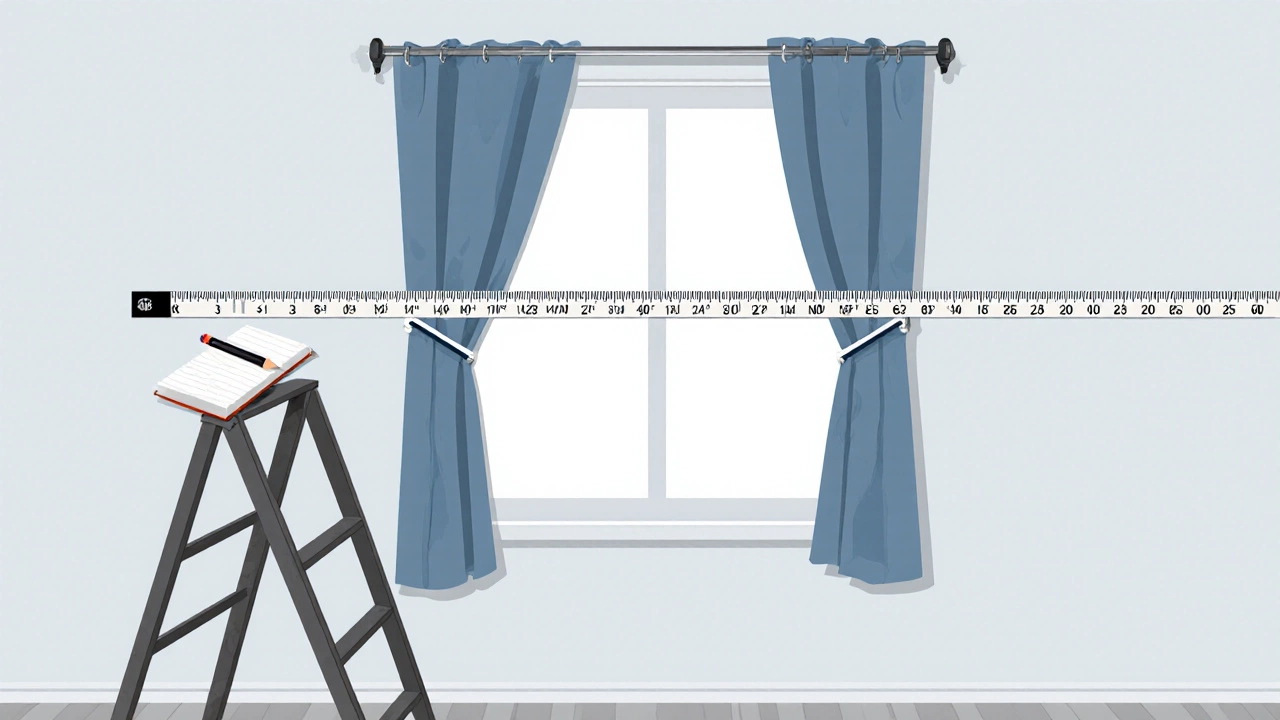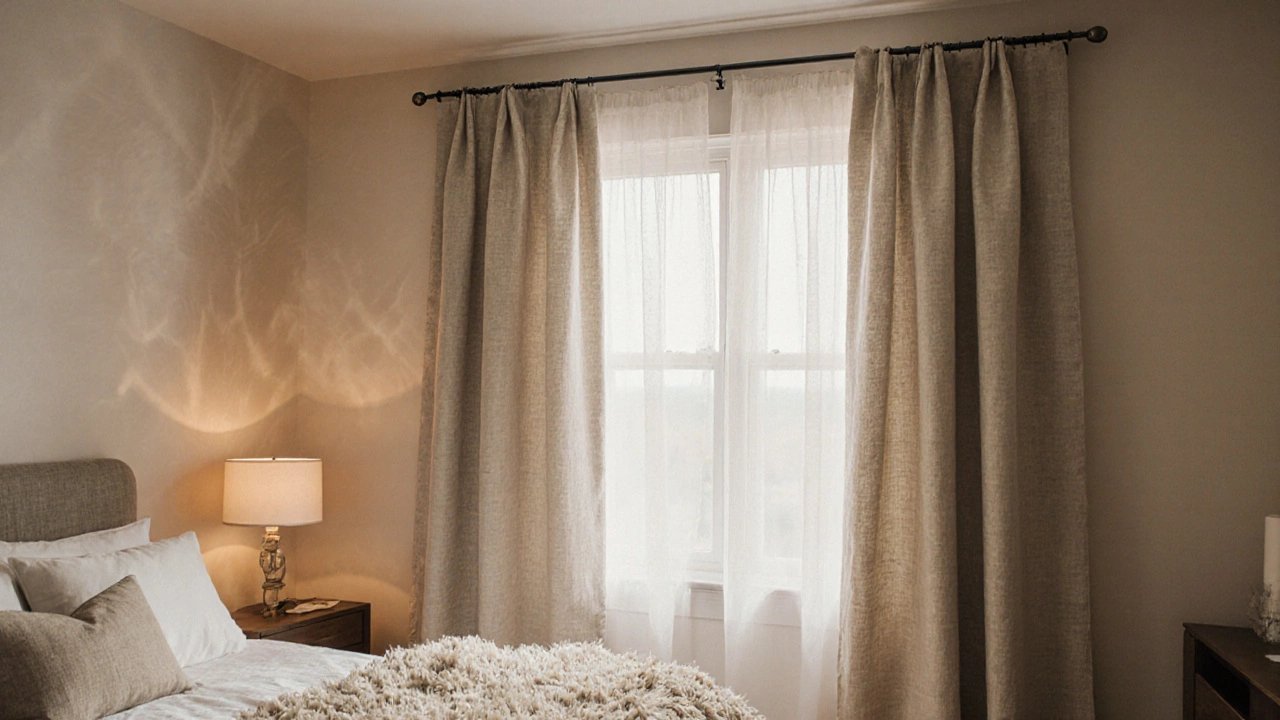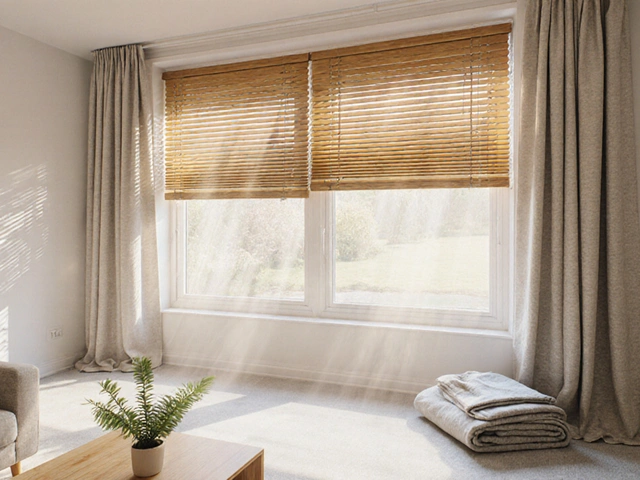Curtain Measurement Calculator
When you stand in front of a window and wonder whether your curtains look right, the answer usually comes down to one simple rule of thumb. It isn’t a magic formula, but it’s reliable enough to save you from curtains that are too short, too narrow, or just plain odd-looking.
Curtains are fabric panels that cover windows to provide privacy, control light, and add style to a room. Getting them right starts with measuring the window properly, then applying the classic 2×window‑width rule for width and the “height‑above‑window” rule for length.
Why the Rule of Thumb Matters
Most people buy curtains based on impulse or a vague idea of “what looks good”. Without a guideline, you end up with panels that bunch up, leave gaps, or drag on the floor. The rule of thumb keeps the visual balance right and ensures the fabric hangs in a way that frames the window, not the other way around.
Step‑by‑Step Measurement Process
- Gather a steel tape measure, a pencil, and a step ladder (if your ceiling is high).
- Measure the window width from the inside of the frames; note this number.
- Decide where you’ll mount the curtain rod. Most designers recommend placing the rod 4‑6inches (10‑15cm) above the top of the frame, but you can go higher for a dramatic effect.
- Measure the distance from the mounting point to the floor. This is your "drop length".
- Write the numbers down. You’ll need them for both width and length calculations.
Rule of Thumb for Width: Double the Window
The classic guideline is to choose curtain panels that together equal at least twice the window’s width. This creates generous folds when the curtains are drawn, giving a soft, layered look.
For example, a 48‑inch (122cm) window needs curtains totaling 96inches (244cm) of fabric width. If you buy two panels, each should be at least 48inches wide. If you prefer a heavier drape, go for three panels and aim for 1.5×window width per panel.

Rule of Thumb for Length: Height‑Above‑Window
Length depends on the style you want:
- Floor‑length: The bottom edge should hover ½‑1inch (1‑2cm) above the floor for a clean finish.
- Puddle: Let the fabric spill over the floor by 2‑4inches (5‑10cm) for a luxurious, romantic vibe.
- Sill‑length: Hang curtains so the bottom sits just above the windowsill; this works well in kitchens or bathrooms.
- Apron‑length: The curtain ends a few inches above the sill, offering a lighter look while still providing privacy.
To calculate, add the distance from the mounting point to your desired endpoint (floor, sill, or puddle) and then subtract any hardware thickness.
Choosing the Right Fabric and Weight
Fabric choice influences how the rule of thumb feels in practice. Light cottons and linens drape nicely with minimal gathering, while heavy velvets benefit from extra width to avoid a stiff look.
Consider these attributes:
- Opacity: Sheer vs. blackout.
- Texture: Smooth satin for formal rooms, textured linen for casual spaces.
- Maintenance: Machine‑washable polyester versus dry‑clean‑only silk.
Mounting Hardware and Placement Tips
How you install the mounting hardware can tweak the visual proportion. Here are quick pointers:
- Use brackets that extend at least 2‑3inches (5‑8cm) beyond the window frame for a wider appearance.
- For very high ceilings, consider a ceiling‑mounted track; it lets you keep the 4‑6inch above‑frame rule while filling the wall space.
- If you have a short window, mounting the rod higher (up to 12inches above the frame) can make the ceiling appear taller.

Common Mistakes and How to Fix Them
Even seasoned decorators slip up. Spot the error, then apply a quick fix:
- Too narrow: Add a second rod with tie‑backs, or use a wider fabric panel to achieve the 2× width rule.
- Too short: Raise the mounting point or switch to a longer rod that allows more fabric drop.
- Uneven folds: Ensure the rod is perfectly level; a laser level saves time.
- Excessive puddling: Trim the bottom hem or choose a lighter fabric that doesn’t gather as much.
Quick Comparison Table
| Style | Mount Height Above Frame | Typical Drop Length | Best Room Types |
|---|---|---|---|
| Floor‑length | 4‑6in (10‑15cm) | Floor-½in gap | Living rooms, bedrooms |
| Puddle | 4‑6in (10‑15cm) | Floor+2‑4in | Formal dining, master bedroom |
| Sill‑length | 4‑6in (10‑15cm) | Sill height | Kitchen, bathroom |
| Apron‑length | 4‑6in (10‑15cm) | Sill-2‑3in | Casual living areas |
Putting It All Together - A Sample Project
Let’s walk through a real‑world example. Imagine a 60‑inch (152cm) wide bedroom window with a ceiling height of 8ft (244cm).
- Measure window width: 60in.
- Apply the 2× rule: Need at least 120in of total curtain width. Choose two panels, each 62in wide (adds a little extra for overlap).
- Decide on floor‑length with a half‑inch gap. Mount the rod 6in above the frame.
- Measure from rod to floor: 84in. Subtract 0.5in for the gap → 83.5in drop.
- Select a linen‑blend fabric that drapes softly; the weight works well with the 2× width.
- Install brackets extending 3in beyond each side of the frame for a balanced look.
- Hang the curtains, adjust the gathers, and step back. The result is a tidy, elegant frame that makes the bedroom feel taller and cozier.
Following the rule of thumb saved time, avoided costly returns, and gave a polished finish.
Frequently Asked Questions
How far above the window should I hang my curtain rod?
Most designers recommend 4‑6inches (10‑15cm) above the top of the frame. Higher placement can make low ceilings feel taller, while lower placement works for very high windows.
Do I need to double the width for blackout curtains?
Yes. Blackout fabrics are heavier and don’t gather as easily, so sticking to the 2× rule (or a little more) ensures there are no light gaps when the panels are closed.
Can I use the same rule for shower curtains?
Shower curtains are a different category. They usually hang from a tension rod and are sized to the tub opening, so the 2× width rule isn’t needed.
What if my window is oddly shaped, like a bay window?
Measure each pane separately, then add the widths together. For the width rule, aim for 2× the combined measurement. Custom tracks can help keep the rod level across angles.
Is there a quick way to check if my curtains are the right length after hanging?
Stand on a firm surface (or a low stool) and look at the bottom edge. It should be just above the floor for a crisp look, or the desired puddle amount if you like that style.



